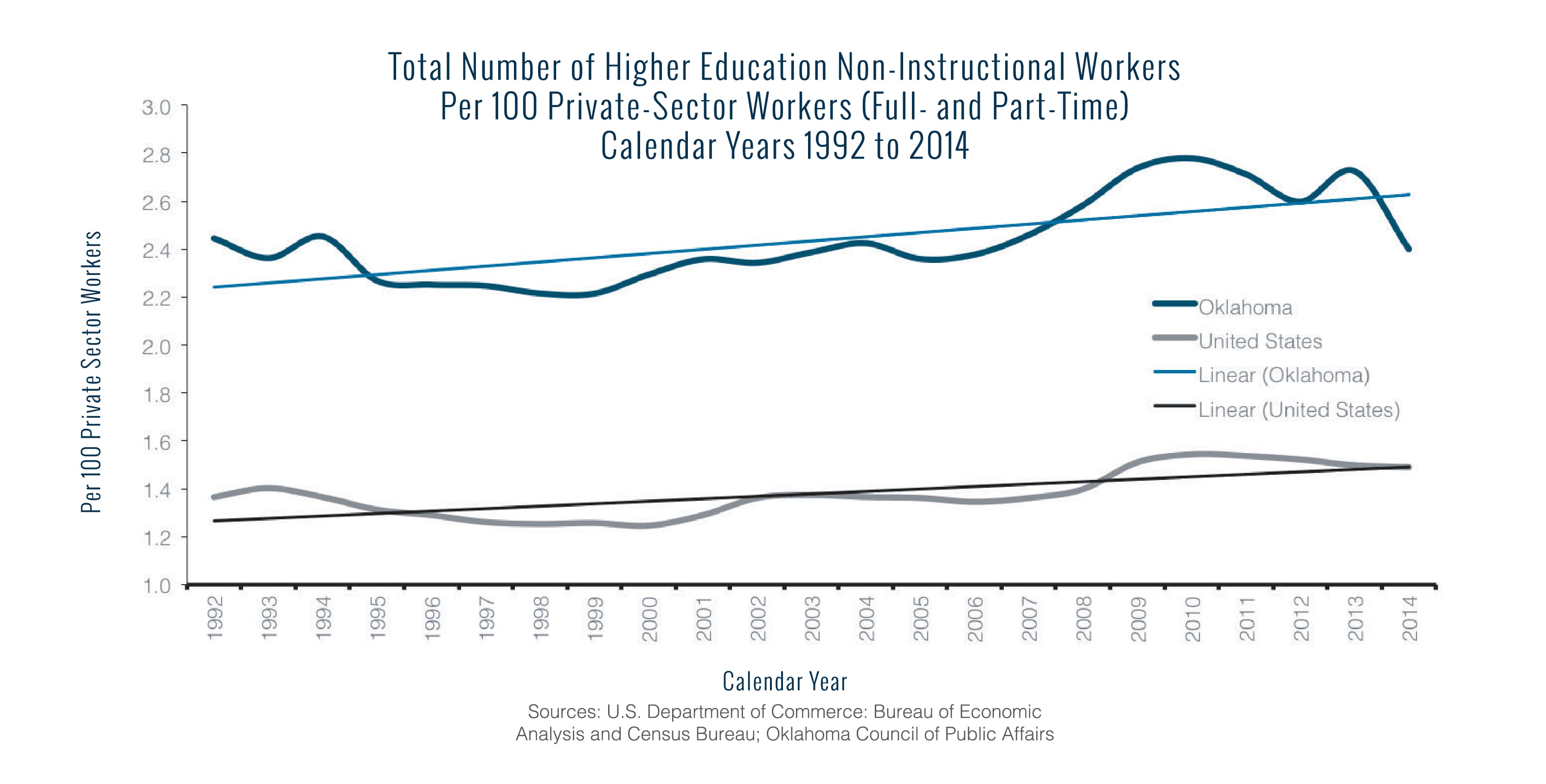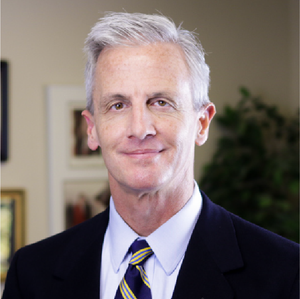Higher Education
Brandon Dutcher | October 25, 2016
Higher Ed Bloat Wastes Millions
Brandon Dutcher
Higher Ed Bloat Wastes Millions
By Brandon Dutcher
As Perspective readers well know, OCPA is devoted to public policy research and analysis. But what you may not realize is that in OCPA’s 22-year history we also have raised $127,000 and awarded it to Oklahoma students to attend college.
That’s a pretty substantial amount, especially when you consider that scholarship-granting is not even our mission as an organization. But it shows just how strongly we believe in higher education.
But we also believe in higher education reform. We believe in higher education efficiency and productivity.
You may have seen in the news recently that, in response to the current downturn in the oil and gas industry, Oklahoma City University’s Meinders School of Business announced a 37 percent decrease in tuition for its graduate-level energy programs. As Steven Agee, dean of the business school, explained: “Given the energy industry’s response to the downturn, with layoffs, cutbacks, and even some reorganization filings, we thought it would be appropriate to restructure the price of our educational products to assist current and prospective students.”
Mr. Agee told Paul Monies of The Oklahoman: “We thought this was a good time to show our support for students at a time when some of the other colleges and universities are raising their tuition.”
By way of contrast, officials in Oklahoma’s public higher education system claim they have no choice but to raise tuition because taxpayers and their elected representatives are stingy when it comes to subsidizing higher education. But that’s not true. “Despite Oklahomans’ relatively low incomes, the state spends handsomely on higher education,” writes economist Byron Schlomach, a scholar-in-residence at the Institute for the Study of Free Enterprise at Oklahoma State University.

“On average,” Dr. Schlomach says, “states devote 8.1 percent of their state and local spending to higher education. Oklahoma devotes 10.4 percent of its spending to higher education. While states spend an average of about 1.6 percent of their GSP on higher education, Oklahoma spends 1.9 percent of its GSP on higher education.”
Unfortunately, much of the money is gobbled up in non-teaching overhead costs. As the chart above indicates, Census data show us that the non-instructional workforce in Oklahoma’s higher education system (as a percent of the private-sector workforce) is an astonishing 61 percent higher than the national average. That’s the 4th highest level in the nation.
“To get back to the national average,” OCPA noted in a recent memorandum, “Oklahoma’s higher education system would have to shed 12,033 non-instructional workers—to 19,701 workers from the current level of 31,734 workers. This would result in total annual savings, on average, of $328,226,106 in wages and salaries—in addition to the millions of dollars in supplemental benefits that would be saved.”
With $328 million a year, tuition costs could be reduced substantially.
Brandon Dutcher is OCPA’s senior vice president. He is editor of the book Oklahoma Policy Blueprint, which was praised by Nobel Prize-winning economist Milton Friedman as “thorough, well-informed, and highly sophisticated.” His articles have appeared in Investor’s Business Daily, WORLD magazine, Forbes.com, Mises.org, The Oklahoman, the Tulsa World, and 200 newspapers throughout Oklahoma and the U.S.

Brandon Dutcher
Senior Vice President
Brandon Dutcher is OCPA’s senior vice president. Originally an OCPA board member, he joined the staff in 1995. Dutcher received his bachelor’s degree in political science from the University of Oklahoma. He received a master’s degree in journalism and a master’s degree in public policy from Regent University. Dutcher is listed in the Heritage Foundation Guide to Public Policy Experts, and is editor of the book Oklahoma Policy Blueprint, which was praised by Nobel Prize-winning economist Milton Friedman as “thorough, well-informed, and highly sophisticated.” His award-winning articles have appeared in Investor’s Business Daily, WORLD magazine, Forbes.com, Mises.org, The Oklahoman, the Tulsa World, and 200 newspapers throughout Oklahoma and the U.S. He and his wife, Susie, have six children and live in Edmond.